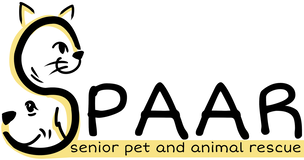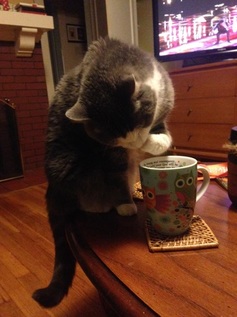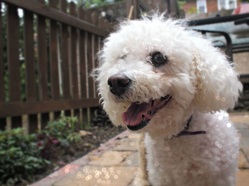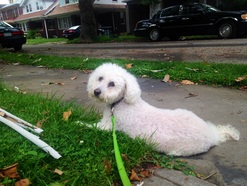
March is the month to move! When the weather permits, take your dog for walks. If your schedule allows, try several short walks to break up the day for your dog and gives you more time together. People and animals tend to go into hibernation mode during the winter. Getting out and stretching muscles is healthy…for you and your dog!
It’s a great time to learn! Now is a great time to brush up on basic obedience and even more advanced skills. This opportunity is the perfect way to stretch your dog’s mental muscles. Find a local obedience class – ask us for recommendations! They will reinforce fundamental commands such at sit, watch me, leave it, down, down-settle, wait/stay, and recall skills. Making training a fun game is key to getting your dog to respond and to want to “work” for you.
Try a flirt pole! A great toy that has a couple of benefits for exercise, play and training is called a Flirt Pole (Google it!). This toy is extremely interactive. You can use it to allow your dog to run, have a goal to catch something, and it is an excellent tool to use for training. With more advanced training, it even has the potential to help dogs with higher prey drives and self-control. It is basically a sturdier, larger version of a Fling-Ama-String cat toy (i.e. cat toys on a string). You will need some space to use this toy. It can help expend energy quickly. You can even use it outside in your yard. You can buy them online, but they are also easy to make yourself. All the supplies needed are available at places like Lowes or Home Depot and it is significantly cheaper to DIY. The most challenging part is picking out a special toy that is used only when using the Flirt Pole. Your dog may even enjoy picking the perfect toy!
Window watching works! If your dog doesn’t get carsick, take your pup for a ride. Most dogs love them. Watching the world through a window can peak curiosity and fulfill their want to be out and about, which can appease boredom.
Fido field trips are fun! If your senior dog is people-friendly, many Lowes and Home Depot stores allow dogs into their buildings. Often the rule is: if they fit into the cart, they may come in. (I have taken my 80lb dog into Home Depot and plopped her into a cart!). Some Barnes and Noble bookstores welcome dogs, and all Tractor Supply stores allow dogs. Each store has different rules regarding animals. Please call ahead and learn each individual stores policies and guidelines. Of course, there are always the more traditional places like PetSmart, Petco, Petagogy, and other pet supply stores that welcome dog-friendly dogs.
Get creative inside! If the weather is just too extreme to venture outside (cold OR hot), you and your pup can have some fun indoors. Playing chase with each other, tug (with appropriate rules and boundaries), hide & seek, and other games you have created can decrease boredom and provide some much-needed mental and physical stimulation. These types of games allow you and your dog to be interactive and even have some special bonding time with each other without the distractions that the world outside creates. Your dog will love it (and you) for putting in the extra time to play.
Dogs love puzzles! Your dog can also be happy stretching brain muscles. You can find professionally-made dog puzzles at pet supply stores or online. If you’re feeling creative, though, you can make puzzles out of pizza boxes, regular boxes, or even hiding treats around the house. For more specific ideas, use Google. Be sure to use low-calorie treats for these types of games and training.





 RSS Feed
RSS Feed